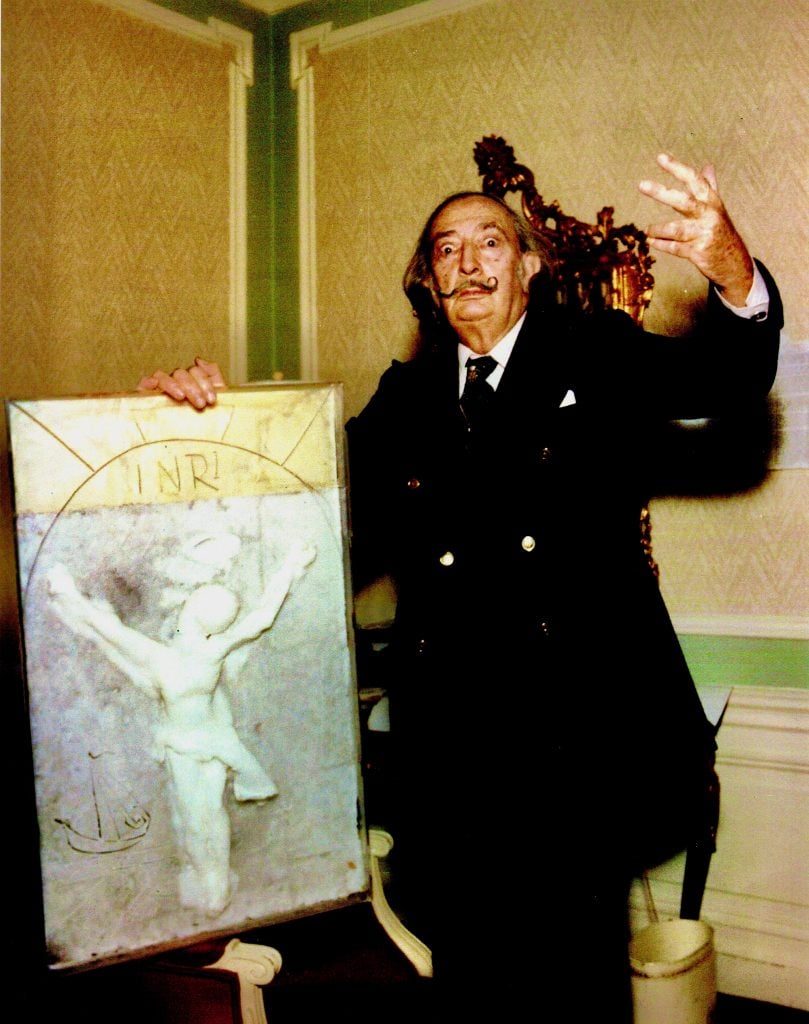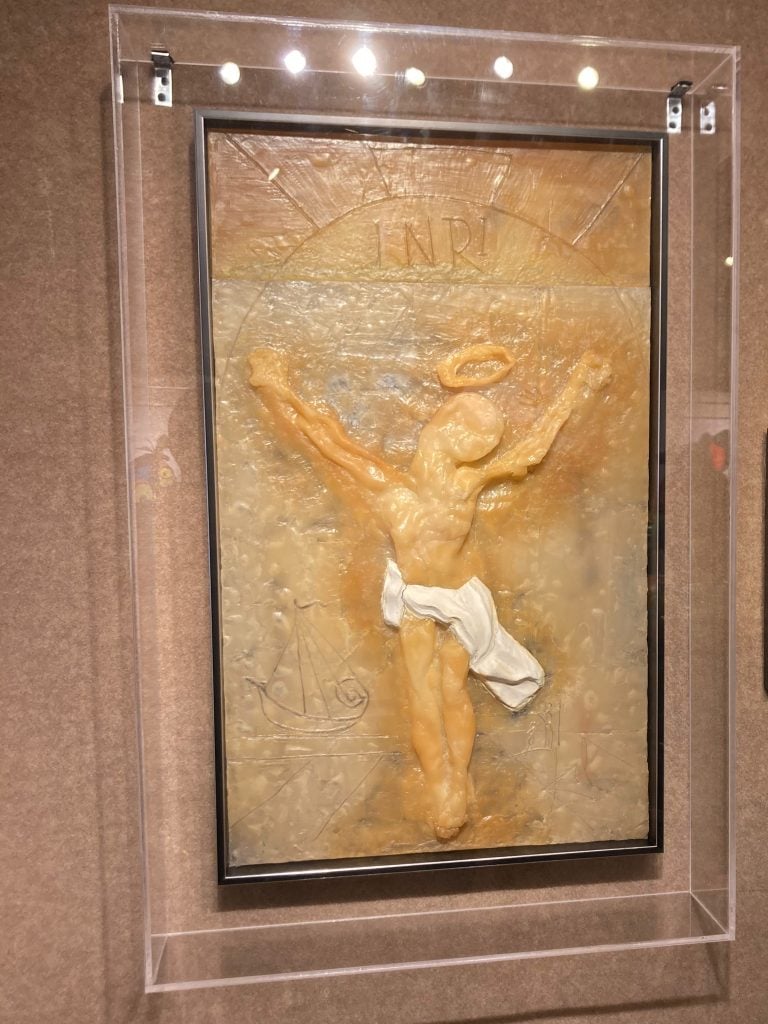Art History
A $10 Million Wax Sculpture by Salvador Dalí, Long Believed to Have Been Destroyed, Just Turned Up in a Collector’s Vault
The piece was unveiled today at a gallery in Hawaii, on the 118th anniversary of the Surrealist master’s birth.

The piece was unveiled today at a gallery in Hawaii, on the 118th anniversary of the Surrealist master’s birth.

Artnet News

Call it a surprise birthday gift. A wax sculpture by Salvador Dalí, long thought to be lost to time, has supposedly been rediscovered.
The piece was revealed to the public today, on the 118th anniversary of the Surrealist master’s birth, by Harte International Galleries on the island of Maui in Hawaii. Completed in 1979, a decade before Dalí’s death, it depicts Jesus crucified above a nondescript body of water, and is loosely based on a 1951 painting by the artist. Both are called Christ of St. John of the Cross.
The sculpture served as the model from which hundreds of platinum, gold, silver, and bronze editions were made. However, experts assumed the original wax carving—a much frailer object—had been destroyed.
“Harte International Galleries has sold a number of the Christ of St. John of the Cross bas-relief sculptures throughout our history, but no one thought the original work—done by a senior Dalí in wax—still existed,” the galleries’ co-owner, Glenn Harte, said in a statement.
The sculpture, wax it turns out, was merely in storage. For the last four decades, it has been housed in the vault of a private collector close to Dalí. The piece was even kept in the original plexiglass casing the artist designed for it.

Salvador Dali’s Christ of St. John of the Cross. Courtesy of Harte International Galleries.
Harte and his team had been in touch with the collector, who wishes to remain anonymous, about acquiring an art book, when they learned about the existence of the sculpture late last year. They purchased the work, gave it the title Lost Wax, and now plan to exhibit it for the first time since Dalí himself was alive.
As for its worth, the gallery has valued the piece at $10–20 million, although a representative said it is not for sale. Such a valuation implies that the sculpture is legitimate, of course. And according to Nicolas Descharnes, a Dalí expert called on by the gallery, it is.
Descharnes—who is the son of Dalí’s longtime secretary—authenticated the piece after consulting with Carlos Evaristo, an iconography expert.
“Following the discovery of the Lost Wax, Harte Galleries met with Descharnes and Evaristo in Avila, Spain, which is where St. John of Spain, a 14th-century monk, was inspired to draw the first impression of Christ on the cross from a heavenly view,” Harte recalled.
“Evaristo was passionate that the sculpture was a three-dimensional representation of the evolution of Christ’s crucifixion, and therefore given the same name as the most important religious work ever created by Dalí, Christ of St. John of the Cross, which was painted in 1951, 28 years before the molding of the sculpture,” Harte said.